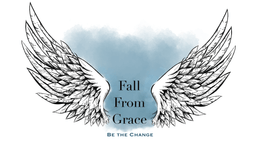Have you ever been faced with the question: “why don’t we get a straight pride?”? Each time I hear it I’m filled with this anger that these people feel the need to celebrate something they did not have to fight for. They haven’t been treated like they were an abomination; they haven’t been scared to publicly show who they love; haven’t frantically wiped off makeup and hidden their flags as soon as they’re on their own for fear of being attacked because of their sexuality or identity. I’m sorry, but when was the last time you heard about conversion therapy for straight people? Even now, in 2022, it’s still not accepted by some, but we can now join together in pride and see how far we have come.
Pride or Pride month is celebrated in June to commemorate the Stonewall Riots in 1969. This was the catalyst for the Gay Rights Liberation Movement and has since turned into a month-long celebration around the world. Stonewall Inn was a sanctuary for those of the LGBTQIA+ community when being themselves was viewed as a crime. When the Inn was raided by police it sparked a multi-day riot that changed the course of history. It may surprise you to know that same-sex activity, whilst first legalised in 1962 in the US (1967 for the UK), was not legalised in all US states until 2003. It took 41 whole years!
One of the first pride events was organised by Brenda Howard who was a bisexual activist in New York. It was organised for June 1970 – a year after Stonewall and was called the Christopher Street Liberation Day March in honour of the street that Stonewall Inn is on. Soon after, pride parades were established all over the world and pride itself has grown into the celebrations we have today.
The pride movement has been a necessary part of human history and is still necessary today. After the first pride parade, many countries legalised homosexuality. Currently there are many countries where those of the LGBTQIA+ community have personal and political rights as a result of pride, such as the Equality Act in the UK.
The fight is, unfortunately, not over though, and pride continues to be a necessary part of our culture:
In 2011 the ‘don’t ask, don’t tell’ policy was officially repealed – this was a policy that allowed gay men and women to serve in the US military IF they kept their sexuality a secret.
In 2014, after many campaigns, Denmark became the first European country to allow transgender people to hold official documents such as passports and driving licences which reflect their gender identity.
In 2021 there were still over 60 countries that criminalised homosexuality.
Furthermore, (as far as my brief investigation can see) the “gay/LGBT panic defence” is still admissible in courts around the world. This is a legal strategy that blames a victim’s sexual orientation and/or gender identity for a defendant’s actions. The most notable case this has been used in is the Matthew Shepard case.
This is why there is no straight pride. Pride is a celebration of being freely who you are. A celebration of being free after years and years of being criminalised and discriminated against. It is not to celebrate being gay it is to celebrate no longer being persecuted. It is still a fight to be treated like a human. We have come a long way, but the fight is not over yet.
So don’t be upset that you don’t have “straight pride”, be glad you don’t need one.
Leave a comment